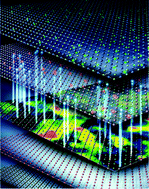Interplay of chemical disorder and electronic inhomogeneity in unconventional superconductors
Abstract
Many of today's forefront materials, such as high-Tc superconductors, doped semiconductors, and colossal magnetoresistance materials, are structurally, chemically and/or electronically inhomogeneous at the nanoscale. Although inhomogeneity can degrade the utility of some materials, defects can also be advantageous. Quite generally, defects can serve as nanoscale probes and facilitate quasiparticle scattering used to extract otherwise inaccessible electronic properties. In superconductors, non-stoichiometric dopants are typically necessary to achieve a high transition temperature, while both structural and chemical defects are used to pin vortices and increase critical current. Scanning tunneling


 Please wait while we load your content...
Please wait while we load your content...